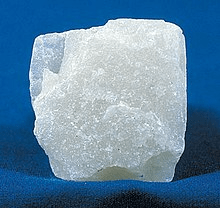The building blocks of rocks.
Minerals
When a force acts upon another object to make it move.
What is mechanical energy?
This describes how rocks are formed, broken apart, and reformed.
What is the rock cycle?
How we get the resources to make things like pop cans, the chips in our phones, and other minerals to build things.
What is mining?
Open pit, underground, panning
How easily light can pass through an object.
What is transparency?
Rocks formed by the layering of mud, sand, and pebbles.
What are sedimentary rocks?
Energy stored in the center of an atom.
What is nuclear energy?
Tells us energy can't be created or destroyed.
What is the Law of Conservation of Energy?
When dangerous materials are spilled around mines, for example, into rivers.
What is environmental poisoning?
How easy it is to scratch a rock.
What is hardness?
Rocks formed by the heating and cooling of lava and magma.
Igneous rock?
Energy created by the movement of particles.
What is heat/thermal energy?
What is panning?
A way to measure how much energy we consume.
What is an ecological footprint?
The use of energy.
What is dissipation?
Rocks formed when other rocks are exposed to high temperature and pressure.
What are metamorphic rocks?
When an object is moving, it uses this type of energy.
What is kinetic energy?
Energy that comes from a source that cannot be replaced.
What is non-renewable energy?
Examples can include:
- Using less water
- Using a bicycle or public transportation
- Turning off electrical devices when not in use
What is the conservation of energy?
The colour a mineral makes when it is crushed into a powder.
What is streak?
The hardest mineral.
What is a diamond?
An object is rolled down a hill. Where does it have the most potential energy?
The top of the hill.
The footprints left behind by animals and dinosaurs.
What are trace fossils?
Cast fossils - The imprint of actual animals or shells.
Mold fossils - After an animal dies, it leaves behind a hole that is filled with sediment.
True Form fossils - The actual animal has been preserved.
Burning fossil fuels contributes to this when gases are released.
What is climate change?
The hardness level of this rock (Talc):

1